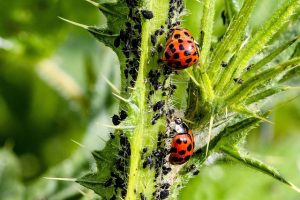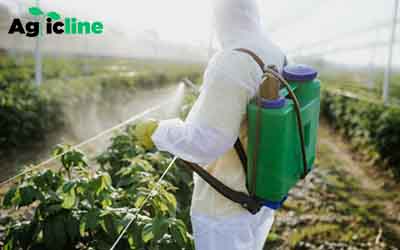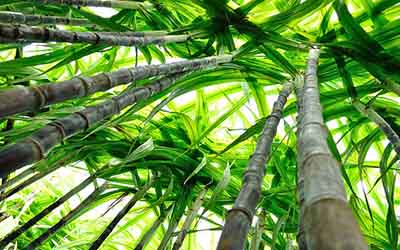Agriculture is one of the oldest and most essential industries, and has long been the backbone of human civilization. With the burgeoning global population, the demand for food has reached unprecedented levels. In this landscape, ensuring the optimal yield and quality of crops is more crucial than ever, knowing the methods of pest control in agriculture is of paramount importance.
Pests, ranging from tiny insects to larger mammals, pose a significant threat to the agricultural sector. When left unchecked, they can decimate entire crops, threatening food security and causing substantial economic losses.
It’s not just about quantity either; pests also compromise the quality of agricultural products. Consuming crops infested with pests or diseases can have detrimental health effects on humans and livestock.
But it’s not just about the immediate crop loss. Pests can leave behind lasting damage, making the soil less fertile or introducing diseases that can linger for years. This can make future farming on the same land difficult, if not impossible, without intensive rehabilitation.
Overview of the methods of pest control in agriculture
Agriculture, with its vast expanses of crops, inevitably attracts a myriad of creatures looking for food and shelter.
These creatures, while playing their role in the ecosystem, can often become destructive pests when their populations explode, leading to significant damage to crops. To control them effectively, it’s imperative first to understand them.
Common Pests in Agriculture
- Insects
Perhaps the most notorious and widespread of agricultural pests. Examples include aphids which suck the sap from plants, weakening them; locusts which can swarm in the millions and devour entire fields; and caterpillars like the corn earworm or the bollworm that consume crops from within.
- Rodents
Rats and mice can wreak havoc in granaries and fields alike. They not only consume crops directly but also damage them by burrowing, leading to soil erosion, and can spread diseases.
- Birds
Certain bird species can be particularly problematic for farmers. Pigeons, sparrows, and blackbirds, for instance, might feed on seeds, fruits, and young plants. Moreover, their droppings can contaminate produce.
- Larger Mammals
Creatures like deer, wild boars, and rabbits can also pose challenges. They might feed on a variety of crops, from grains to vegetables, causing notable damage especially when they feed in large groups.
Life Cycles of Pests and Their Impact
Understanding the life cycle of a pest is vital for effective control. Different life stages can cause varying degrees of damage, and some stages might be more vulnerable to control measures than others.
- Eggs
Many pests lay eggs on or near their food sources. For instance, the cabbage white butterfly might deposit its eggs on cabbage plants. While the eggs themselves might not cause damage, the caterpillars that emerge from them can decimate the crop.
- Larvae/Nymphs
This stage, found in insects, is often the most damaging. Caterpillars, grubs, and nymphs consume large amounts of food as they grow, causing significant harm. For example, the larvae of the Colorado potato beetle can strip potato plants bare if left unchecked.
- Adults
Some adult pests, like locusts, continue to feed on crops. Others might not cause direct damage but play a role in reproduction, ensuring the next generation of pests.
Best Methods of pest control in agriculture
See below;
1. Chemical Methods of pest control in agriculture
The use of chemicals in controlling pests revolutionized agriculture, enabling unprecedented increases in crop yields and making food more accessible to growing populations. However, like all powerful tools, chemical pesticides come with both benefits and challenges.
The use of chemicals for pest control dates back thousands of years. Ancient civilizations used substances like sulfur and arsenic to fend off pests. The discovery and subsequent widespread use of DDT during World War II marked a turning point in the world of pesticides.
Benefits of use of chemicals for pest control
- Efficiency
- Cost-Effective
- Predictability
Challenges of use of chemicals for pest control
Pesticide Resistance
-
- Environmental Impact
- Health Concerns
2. Biological Method of pest control in agriculture
Biological control, often dubbed “biocontrol”, leverages the natural relationships between pests and their predators, parasites, or pathogens to manage pest populations. This method harnesses the power of living organisms to counteract pests, offering an environmentally-friendly alternative to chemical control.
These are organisms that hunt, kill, and consume pests. They play a crucial role in maintaining ecological balance and can be potent allies in agricultural settings.
Examples of Successful Biological Control Methods
- Ladybugs against Aphids
- Bacillus thuringiensis (Bt) against Caterpillars
- Trichogramma Wasps against Moths
- Nematodes against Grubs
3. Cultural Method of pest control in agriculture
Cultural control, a critical aspect of integrated pest management (IPM), involves tweaking agricultural practices to make the environment less hospitable for pests.
By understanding the biology and behavior of pests, farmers can use these practices to reduce or prevent infestations without relying on chemical interventions.
- Adjusting Planting Times to Avoid Peak Pest Activity
- Proper Sanitation Practices to Remove Pest Habitats and Breeding Grounds
- Using Pest-Resistant or Tolerant Crop Varieties
4. Mechanical and Physical Method of pest control in agriculture
Mechanical and physical control methods involve the direct use of equipment, tools, or environmental factors to prevent, deter, or manage pest populations.
These methods can often be used in tandem with other forms of pest control to provide a more holistic approach to pest management.
Here, we will be discussing Barriers, Traps, and Other Mechanical Control Tools.
Barriers
These are physical obstructions placed to prevent pests from accessing crops.
Examples
-
-
- Row covers can be used to protect vegetables from flying insects.
- Netting can protect fruit trees from birds and bats.
- Mulch can deter soil-borne pests and weeds.
-
Traps
Devices designed to attract, capture, and often kill pests.
-
- Examples:
- Sticky traps can catch flying insects like whiteflies and aphids.
- Pheromone traps attract pests using their own mating scents, helping monitor and reduce their populations.
- Light traps are used to attract and trap nocturnal insects.
- Examples:
Other Tools
Various equipment can be used for pest control.
-
- Examples:
- Vacuum devices can suck up pests like the lygus bug from crops.
- Insect screens on greenhouses can prevent pest entry.
- Examples:
5. Temperature Method of pest control in agriculture
Many pests are sensitive to temperature changes, and extreme temperatures can kill them or disrupt their life cycles.
- Heat Treatments
- Soil solarization involves covering the soil with clear plastic during the hottest months, trapping heat and killing soil-borne pests and diseases.
- Hot water treatments can be used for seeds or planting materials to kill any adhering pests or pathogens.
- Heat chambers can be used to treat wood or other materials infested with pests.
- Cold Treatments
- Cold storage
- Freezing
Integrated Pest Management (IPM)
Integrated Pest Management (IPM) is more than just a pest control strategy; it represents a shift in the way we think about and approach pest problems.
By incorporating a variety of methods and considering the broader ecosystem, IPM provides a roadmap for effective, sustainable, and environmentally-friendly pest management.
Unlike traditional methods that often focus solely on eradication, IPM prioritizes understanding and managing pest ecosystems. It acknowledges that a certain level of pests is inevitable and often acceptable. IPM emphasizes research, ongoing monitoring, and the gathering of data to inform decisions.
While not entirely against chemical intervention, IPM regards it as a last resort. It promotes the judicious use of chemicals when absolutely necessary, favoring the least toxic options.
Steps and Principles of an Effective IPM Program
- Regular Monitoring: Continuous observation and data collection are fundamental to IPM. By understanding pest behavior and population dynamics, interventions can be more accurately timed and targeted.
- Accurate Identification: Properly identifying pests ensures the appropriate control strategies are chosen. Misidentification can lead to ineffective treatments and wasted resources.
- Understanding Economic Thresholds: IPM recognizes that some level of pest damage is tolerable. The economic threshold is the level at which the cost of further damage exceeds the cost of control. Actions are taken only when this threshold is crossed.
- Preventative Cultural Practices: These are farming methods that prevent pests from becoming a threat, such as crop rotation, intercropping, and using resistant varieties.
- Integration of Multiple Control Tactics: If preventive measures aren’t enough, a range of tactics—from biological controls to mechanical interventions—are considered before resorting to chemicals.
- Regular Evaluation: After implementing controls, outcomes are reviewed to assess efficacy and make any necessary adjustments.
Benefits of Adopting IPM in Modern Agriculture
- Reduced Environmental Impact
- Cost Savings
- Health Benefits
- Biodiversity Conservation
- Resistance Management
6. Organic Methods of pest control in agriculture
The movement towards organic farming has grown exponentially over the past few decades. As consumers become increasingly conscious of the environmental and health impacts of conventional agriculture, there’s been a pronounced shift towards organic methods.
A cornerstone of organic farming is its innovative approach to pest control, which shuns synthetic chemicals in favor of natural methods.
Organic farming is not just about avoiding synthetic chemicals—it represents a holistic approach to agriculture. The focus is on fostering healthy soil, promoting biodiversity, and working with nature rather than against it.
Central to organic farming is the idea that a healthy ecosystem will naturally regulate pests. By enhancing the farm’s overall health, organic farmers aim to create a balance where pests are kept in check without synthetic interventions.
Natural Repellents and Attractants
- Plant-Based Repellents: Certain plants produce compounds that deter pests. For instance, neem oil, derived from the neem tree, acts as a repellent for many pests.
- Beneficial Insects: Some insects are natural predators of pests. By attracting or introducing these beneficial insects, farmers can manage pest populations. Ladybugs, for example, are voracious eaters of aphids.
- Diatomaceous Earth: This naturally occurring substance is made from fossilized diatoms. When pests come into contact with it, it damages their exoskeletons, leading to dehydration and death.
- Natural Attractants: These can be used in traps to lure pests away from crops. For example, pheromone traps use the natural chemicals insects produce to attract mates.
Technological Advancements in Pest Control
As the world grapples with feeding a growing population while facing environmental challenges, technology has emerged as a crucial ally in modern agriculture.
Recent innovations in the realm of pest control combine cutting-edge science with practical applications, offering promising solutions to age-old challenges.
The Use of Drones for Monitoring and Application
Drones equipped with high-resolution cameras and sensors can provide real-time images of vast agricultural areas, allowing farmers to detect early signs of pest infestations.
Advanced software can process drone-acquired data to identify problem areas and even predict potential future outbreaks based on pest life cycles and environmental conditions.
Drones can be equipped to release biological controls, such as beneficial insects, or to apply natural or chemical pesticides with pinpoint accuracy, thereby reducing waste and minimizing the impact on non-target species. They can cover vast areas much faster than human workers, ensuring timely interventions and minimizing crop losses.
Precision Agriculture and its Role in Targeted Pest Control
Precision agriculture utilizes technology to apply the right treatment, at the right time, in the right place. It’s about optimizing inputs and maximizing outputs.
- Soil Sensors: These devices can detect changes in soil composition, moisture levels, and other parameters. Changes can indicate pest activity or conditions conducive to pest outbreaks.
- Automated Sprayers: These devices use data from various sensors to apply pesticides only where they are needed, reducing overall usage and ensuring that crops receive the exact treatment they require.
- Satellite Imaging: Advanced imaging can provide large-scale overviews of crop health and highlight areas under pest stress, guiding intervention strategies.
Genetic Engineering and GMOs Designed for Pest Resistance
- Bt Crops: One of the most well-known applications of genetic engineering in pest control is the development of crops that express the Bt toxin, a natural insecticide from the bacterium Bacillus thuringiensis. Insects that consume these crops ingest the toxin and die.
- RNA Interference: This is a newer approach where plants are engineered to produce specific RNA molecules that, when ingested by pests, block essential genes and lead to their death.
- Enhanced Natural Defenses: Scientists are working on amplifying plants’ natural defense mechanisms through genetic modifications, making them more resilient to pest attacks.
- Controversies and Considerations: While GMOs offer potential solutions to pest problems, they are not without controversy. Concerns about ecological impacts, human health, and socioeconomic implications have sparked debates worldwide. It’s crucial to approach the technology with thorough research and careful regulation.
7. Natural pest control methods in agriculture
As we cultivated crops, we simultaneously waged a constant battle against pests. Over time, while synthetic chemicals became a popular solution, they also brought with them a slew of environmental and health concerns.
Today, there’s a growing emphasis on returning to nature for answers. Natural pest control methods not only align with sustainable agricultural practices but also offer a holistic approach to managing pests.
- Companion Planting
- Crop Rotation
- Beneficial Insects
- Biological Controls
- Natural Repellents
- Beneficial Habitats
- Mulching
- Hand Picking

My final thought on Methods of pest control in agriculture
The challenges of pest control in agriculture are neither new nor trivial. Pests have always posed significant threats to our food supply and livelihoods.
However, as we’ve looked into various methods of pest control from traditional practices to cutting-edge technologies, it’s clear that the focus is shifting towards sustainability.
Sustainable pest control isn’t just about eradicating pests but doing so in a manner that is harmonious with the environment, economical over the long term, and safe for both producers and consumers.
As the global population continues to soar and climate patterns shift unpredictably, the importance of effective and sustainable pest control only magnifies.
I urge each one of our readers to take a proactive role in the future of agriculture. Knowledge is a powerful tool. By understanding the intricacies of sustainable pest control, you can make informed decisions, whether you’re a farmer, or a consumer.
Recommendation
What is the green revolution in agriculture?
Environmental benefits of urban farming
Best farming technology in India



